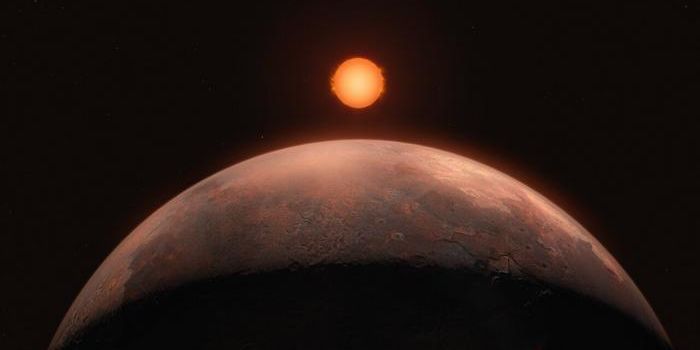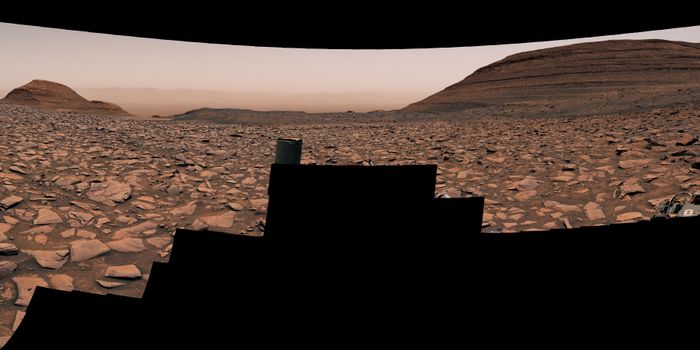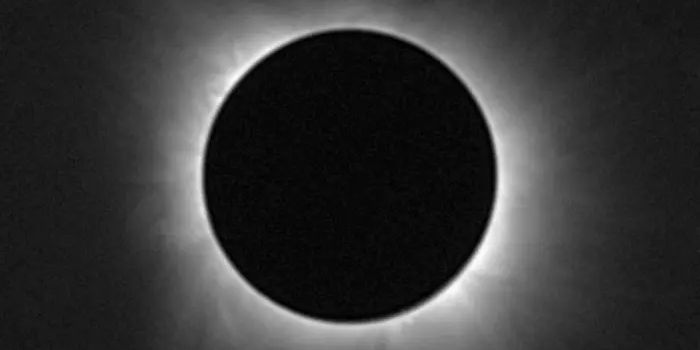JWST Reveals Dusty Disk in Attempt to Directly Image Exoplanets
A team of astronomers have been using the James Webb Space Telescope (JWST) to attempt to directly image exoplanets around nearby, low-mass stars. By using this technique, they expect to be able to find giant planets in wide orbits, similar to gas and ice giants in our Solar System. The first results of this study were revealed in a press conference at the 241st meeting of the American Astronomical Society in Seattle, Washington. Kellen Lawson, astronomer at NASA’s Goddard Space Flight Center, presented the results on behalf of the team.
Lawson presented detailed infrared images of the dusty disk in orbit around AU Microscopium (AU Mic) obtained with JWST’s Near-Infrared Camera (NIRCam) at 3.56 and 4.44 microns. These are the first images of the disk that have been at these wavelengths.
AU Mic is a red dwarf star – a star that is cooler and smaller than our Sun – located 32 light-years away. The system is approximately 23 million years old, which means that it has progressed past the point of planet formation that occurs within the first 10 million years of the life of a star. There are two known exoplanets in orbit around AU Mic, which have previously been discovered by other telescopes. The process of planet formation has left a debris disk in orbit around AU Mic; the disk is the result of the collisions between leftover planetesimals – small bodies in a planetary system that were formed out of small dust grains.
The team used the coronograph on NIRCam to block out the bright light from the central star and image the disk at regions very close to the star. This allowed the team to observe the disk up to 5 astronomical units (460 million miles) away from the central star. This distance is equal to the distance at which Jupiter orbits the Sun in our Solar System.
Caption: The above images are coronographic images of the debris disk around the star AU Microscopii – or AU Mic – taken by the Near-Infrared Camera (NIRCam) on the James Webb Space Telescope (JWST). The two colors indicate two different wavelengths of infrared light (blue = 3.56 microns, red = 4.44 microns). The scale bar is represented in AU, or astronomical units, the average distance between the Earth and the Sun. Credit: NASA, ESA, CSA, Kellen Lawson (NASA-GSFC), Joshua E. Schlieder (NASA-GSFC), Alyssa Pagan (STScI)
The disk was brighter at shorter wavelengths, which corresponds to bluer light. This means that there is likely a lot of fine dust that exists in the disk because fine dust is more efficient at scattering shorter wavelengths of light. This is consistent with previous results, which indicate that the radiation pressure from AU Mic would not be strong enough to eject fine dust from the disk.
While detecting and characterizing the dusty disk is significant, the ultimate goal for the team is to find giant planets in wide orbits, not dissimilar to planets in the outer parts of our Solar System. These types of planets are extremely difficult to detect using traditional methods (i.e., transit or radial velocity methods). “This is the first time that we really have sensitivity to directly observe planets with wide orbits that are significantly lower in mass than Jupiter and Saturn. This really is new, uncharted territory in terms of direct imaging around low-mass stars,” according to Lawson. These early results are cause for hope, and perhaps soon we will be directly imaging lots of exoplanets with JWST!
Source: Webb Space Telescope









